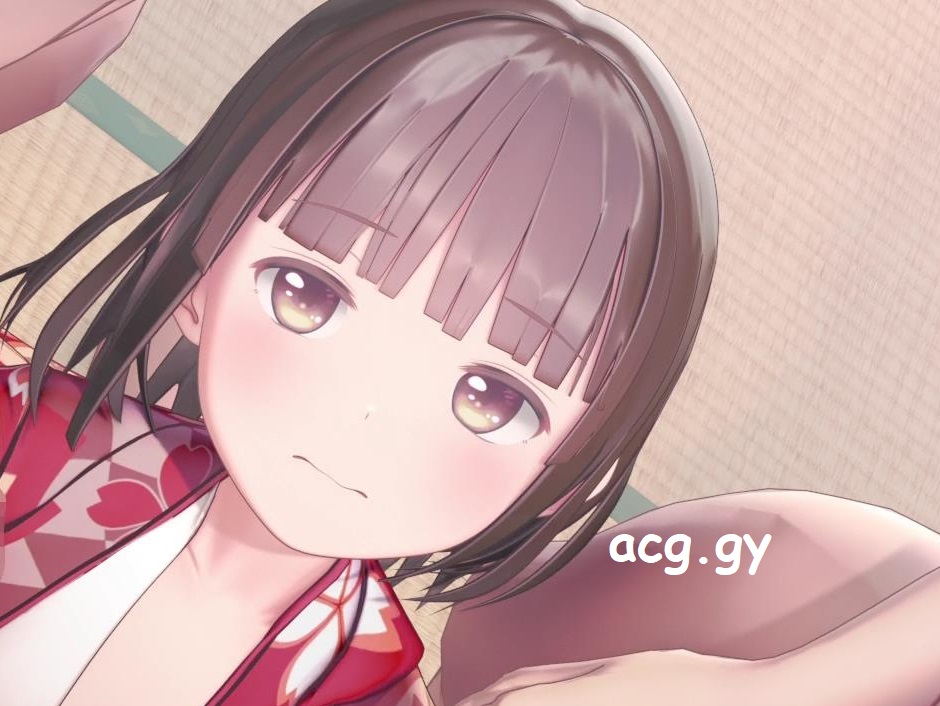The Ultimate Guide To Custom Udon: Create Your Perfect Bowl!
Ever found yourself staring at a menu, wishing you could tweak just one thing to make it absolutely perfect? For noodle lovers, that dream is now a reality. The rise of custom udon isn't just a trend; it's a culinary revolution putting you, the diner, firmly in control of your bowl.
Forget the limitations of pre-set menus. Custom udon invites you to become the chef, orchestrating a symphony of flavors and textures to create a dish that speaks directly to your palate. This isn't just about satisfying hunger; it's about embarking on a personalized culinary journey, where every ingredient is a brushstroke in your own edible masterpiece. From the thickness of the noodle to the richness of the broth and the vibrant array of toppings, the possibilities are as boundless as your imagination.
| Aspect | Details |
|---|---|
| What is Custom Udon? | A personalized take on the traditional Japanese udon noodle dish, allowing for complete control over ingredients, flavors, and presentation. |
| Key Components | Noodle selection (thickness, texture, color), broth customization (dashi, soy sauce, miso), topping choices (meat, vegetables, seafood, tempura, spices). |
| Origins | Evolved from the growing demand for personalized dining experiences, offering a highly adaptable dish catering to individual preferences and dietary needs. |
| Benefits | Empowers diners to create a unique and satisfying meal, caters to specific tastes and dietary restrictions, enhances appreciation for the dish's flexibility. |
| Platforms & Communities | Online platforms like Customudon.fanbox.cc (on Pixiv Fanbox) and various ACG (Anime, Comics, Games) communities showcase custom udon creations and virtual experiences. |
| Creative Applications | Extends beyond food, also finds usage in virtual environments, anime, comics, and games where people create, watch and share engaging content. |
| Popular Trends | Experimentation with flavors, ingredients, and toppings, fusion cuisine, dietary and health consideration. |
The beauty of custom udon lies in its adaptability. At its heart, udon is a simple dish: thick, chewy wheat flour noodles served in a broth. But within that simplicity lies a universe of potential. The noodles themselves are the first point of customization. Do you prefer a thick, robust noodle that offers a satisfying chew? Or perhaps a thinner, more delicate strand that readily absorbs the flavors of the broth? Some establishments even offer colored noodles, incorporating ingredients like spinach or beetroot for a visual and nutritional boost.
- Tamilblasters New Link Find Tamil Movies More Year Guide
- Kannada Movie Mania Finding New Releases Movierulz Insights
The broth is the soul of the udon, and here, the possibilities truly explode. The traditional dashi broth, made from kombu (kelp) and katsuobushi (dried bonito flakes), forms the foundation for many variations. But from there, chefs and home cooks alike can venture into uncharted territory. Soy sauce-based broths offer a savory depth, while miso broths bring a rich, fermented complexity. For those seeking a lighter, more refreshing experience, a clear broth infused with citrus or herbs might be the perfect choice. Consider the addition of ingredients like ginger, garlic, or chili to add a layer of warmth and spice.
And then, there are the toppings. This is where you can truly let your personality shine. Classic options like thinly sliced beef, tempura shrimp, and soft-boiled eggs are always a welcome addition. But don't be afraid to think outside the box. Grilled vegetables, seasoned tofu, pickled ginger, seaweed salad the list goes on and on. For the adventurous, consider adding a dollop of spicy miso paste or a sprinkle of toasted sesame seeds to elevate the flavor profile even further.
The rise of custom udon reflects a broader trend in the culinary world: the demand for personalization. Diners are no longer content to simply accept what's on the menu; they want to be active participants in the creation of their meals. This shift is driven by a number of factors, including a growing awareness of dietary needs and preferences, a desire for unique and memorable dining experiences, and the increasing accessibility of diverse ingredients and culinary techniques.
- Hdhub4u Your Guide To Bollywood Hollywood More 2025
- Bollywood Movies Watch Top Films Streaming Guide 2024
For individuals with dietary restrictions, custom udon offers a particularly valuable solution. Whether you're vegetarian, vegan, gluten-free, or have other allergies or sensitivities, you can easily tailor your udon bowl to meet your specific needs. Simply choose a broth and toppings that are free of the ingredients you need to avoid, and you can enjoy a delicious and satisfying meal without worry.
Beyond the practical benefits, custom udon also offers a unique opportunity for culinary exploration. By experimenting with different combinations of noodles, broths, and toppings, you can discover new flavors and textures that you never knew existed. This is a chance to push your boundaries, challenge your assumptions, and develop a deeper appreciation for the art of cooking.
Creating your own custom udon bowl is surprisingly easy, whether you're cooking at home or ordering at a restaurant. If you're cooking at home, start by gathering your ingredients. You'll need udon noodles, a broth base (dashi, soy sauce, miso, etc.), and a variety of toppings. Cook the noodles according to the package directions, and prepare your broth. Then, simply assemble your bowl, layering the noodles, broth, and toppings to your liking.
If you're ordering at a restaurant, look for establishments that offer a custom udon option. These restaurants will typically have a menu that allows you to choose your noodles, broth, and toppings from a list of options. Don't be afraid to ask questions and experiment with different combinations. The staff should be happy to guide you through the process and offer suggestions based on your preferences.
But the world of "custom udon" extends beyond the culinary realm. Online platforms like Customudon.fanbox.cc, found on Pixiv Fanbox, are dedicated to showcasing unique and custom content related to udon. However, in this context, "udon" often refers to a character or theme within anime, comics, and games (ACG). These platforms, especially within Southeast Asia, provide a space for people to create, watch, and share engaging videos related to this character.
Within these ACG communities, "custom udon" can be an empowering tool for creating engaging virtual experiences. When used safely, it opens endless possibilities in immersive environments, allowing users to create and interact with content in unique and personalized ways. This virtual adaptation highlights the versatility of the "custom udon" concept, extending its reach beyond the traditional food context.
The concepts flexibility is not without its nuances. The phrase "\u3010custom udon\u3011all works collection (as of february 25)" signifies a compilation of creations as of a specific date within these online communities, showcasing the evolving nature of the content. Different image dimensions, as seen in examples like "13g\u91cd\u5de5\u4e1a\u9879\u76ee\u5408\u96c6\u3010custom udon\u3011 \u56fe\u7247\u5c3a\u5bf81728x1080" and "\u3010\u4e4c\u51accustom udon\u3011\u4e4c\u51ac\u8001\u5e08\u4e03\u6708\u65b0\u4f5c \u56fe\u7247\u5c3a\u5bf8846x528," further emphasize the diverse range of visual content associated with this term.
It's also important to note that the term can sometimes be associated with suggestive or mature themes, particularly within certain online communities. Examples like "Custom_udon \u3010\u5c0f\u841d\u8389\u52a8\u753b\u3011custom_udon \u5c0f\u841d\u8389\u554a,\u6211\u7684\u5c0f\u841d\u8389 \u5168\u5408\u96c6_\u54d4\u54e9\u54d4\u54e9 \u56fe\u7247\u5c3a\u5bf81728x1080" and the references to "custom udon\u4e4c\u51ac" indicate a connection to specific artists and content creators who may produce material of this nature.
Therefore, it's crucial to exercise caution and be aware of the potential content when exploring "custom udon" outside of the culinary context. While it can be a source of creativity and entertainment, it's essential to ensure that the content is appropriate for your age and sensibilities.
Whether you're a seasoned chef or a novice cook, custom udon offers a fun and rewarding way to explore the world of Japanese cuisine. So, the next time you're craving a bowl of noodles, don't settle for the ordinary. Embrace the freedom of customization and create an udon masterpiece that is uniquely your own.
Let's delve deeper into the practical aspects of creating your perfect udon bowl. The customization process isn't just about throwing ingredients together; it's about understanding how different components interact to create a harmonious and satisfying flavor profile. For example, the type of noodle you choose will significantly impact the overall texture of the dish. Thicker noodles offer a more substantial bite, while thinner noodles are more delicate and absorb the broth more readily.
Similarly, the broth you select will determine the dominant flavor profile of the udon. A dashi-based broth provides a light and umami-rich foundation, while a soy sauce-based broth adds a savory depth. Miso broths offer a more complex and fermented flavor, and creamy broths, like those made with tonkotsu (pork bone broth), can provide a rich and decadent experience.
When it comes to toppings, consider the balance of flavors and textures. Add a protein source, such as sliced beef, chicken, tofu, or seafood, to provide substance and satiety. Incorporate vegetables, such as spinach, mushrooms, scallions, or bamboo shoots, to add freshness and nutritional value. And don't forget to add a touch of spice, such as chili flakes, ginger, or wasabi, to awaken the palate.
The key to successful udon customization is experimentation. Don't be afraid to try new combinations of noodles, broths, and toppings until you find your perfect formula. Consider the seasonality of ingredients, and adapt your udon bowl to reflect the flavors of the current season. In the winter, you might opt for a hearty miso broth with root vegetables and warming spices. In the summer, you might prefer a light and refreshing dashi broth with chilled noodles and fresh herbs.
Beyond the individual ingredients, consider the overall presentation of your udon bowl. A visually appealing dish is always more enjoyable to eat. Arrange the toppings artfully, and garnish with a sprinkle of sesame seeds, a drizzle of chili oil, or a sprig of fresh herbs. Take pride in your creation, and savor every bite.
The cultural significance of udon in Japan cannot be overstated. It's a staple food, enjoyed by people of all ages and backgrounds. Udon restaurants can be found on nearly every corner, from humble mom-and-pop shops to upscale establishments. The dish is often associated with comfort food and nostalgia, evoking memories of childhood and family gatherings.
In recent years, udon has gained popularity around the world, thanks to its versatility, affordability, and deliciousness. Many restaurants outside of Japan now offer custom udon options, allowing diners to experience the joy of creating their own personalized bowl. As the demand for personalized dining experiences continues to grow, custom udon is poised to become even more popular in the years to come.
From a nutritional standpoint, udon can be a relatively healthy meal, depending on the ingredients you choose. Udon noodles are a good source of carbohydrates, providing energy for the body. The broth can be a source of vitamins and minerals, especially if it's made with nutrient-rich ingredients like kombu and seaweed. And the toppings can provide protein, fiber, and other essential nutrients.
However, it's important to be mindful of the sodium content of udon, as many broths are high in salt. To reduce the sodium content, you can make your own broth at home, using low-sodium soy sauce and dashi. You can also choose toppings that are naturally low in sodium, such as vegetables and tofu.
Whether you're seeking a comforting and familiar meal or a culinary adventure, custom udon offers something for everyone. Its flexibility, affordability, and deliciousness make it a perfect choice for any occasion. So, embrace the art of customization, and create an udon bowl that is uniquely your own.
To further enhance your udon-making skills, consider exploring the traditional techniques used by Japanese chefs. One key technique is the proper kneading of the udon dough. This process requires patience and practice, but it's essential for creating noodles with the perfect texture.
Another important technique is the precise cooking of the noodles. Udon noodles should be cooked al dente, meaning they should be firm to the bite. Overcooked noodles will be mushy and unappetizing.
Finally, pay attention to the presentation of your udon bowl. A well-presented dish is always more enjoyable to eat. Arrange the toppings artfully, and garnish with a sprinkle of sesame seeds, a drizzle of chili oil, or a sprig of fresh herbs.
As you delve deeper into the world of custom udon, you'll discover a wealth of information and inspiration online. Numerous websites and blogs offer recipes, tips, and techniques for making delicious udon at home. You can also find inspiration from social media platforms, where food enthusiasts share photos and videos of their own custom udon creations.
Don't be afraid to experiment, and have fun with the process. Custom udon is all about expressing your creativity and personal taste. So, let your imagination run wild, and create an udon bowl that is truly one-of-a-kind.
The versatility of custom udon extends beyond the traditional Japanese flavor profiles. You can incorporate elements from other cuisines to create unique and exciting fusion dishes. For example, you could add Italian pesto to your udon bowl, or incorporate Mexican spices and ingredients. The possibilities are endless.
Another way to customize your udon is to experiment with different types of noodles. While udon noodles are traditionally made from wheat flour, you can also find noodles made from rice flour, buckwheat flour, or even sweet potato flour. Each type of noodle has its own unique flavor and texture, so be sure to try them all.
When choosing toppings for your custom udon bowl, consider the seasonality of the ingredients. Fresh, seasonal ingredients will always taste better than those that are out of season. In the spring, you might add asparagus, peas, or fava beans to your udon bowl. In the summer, you might add tomatoes, cucumbers, or corn. In the fall, you might add squash, pumpkins, or sweet potatoes. And in the winter, you might add root vegetables, such as carrots, parsnips, or turnips.
The key to creating a truly memorable custom udon experience is to pay attention to the details. From the quality of the noodles to the freshness of the ingredients and the artful presentation of the dish, every element contributes to the overall experience.
So, the next time you're looking for a delicious and satisfying meal, consider custom udon. With its endless possibilities for customization, it's a dish that is sure to please everyone.
- Filmywap South The Complete Guide To South Indian Cinema More
- Hdhub4u Is It Safe Risks And Legal Streaming Alternatives

Ultimate Custom Udon Build Your Dream Bowl

Delightful Custom Udon Your Ultimate Guide To Tailored Noodles

custom_udon 千图网